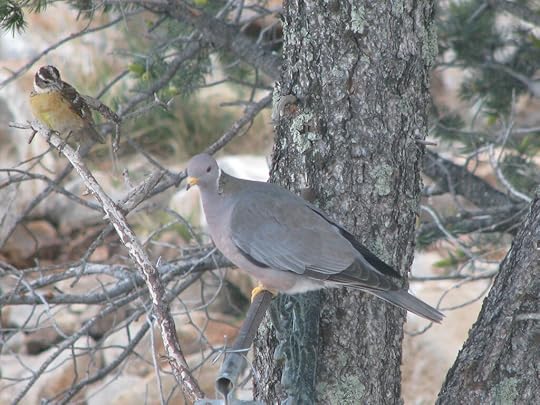Why Did Birds Survive While Dinosaurs Didn’t? #dinosaur #extinction #asteroid #birds
For me, it’s never been “why did they die?” but “why did any survive?“
66 million years ago, a massive asteroid at least 6 miles (10 km) across slammed into Earth. Species of mammals, birds, lizards, insects, pterosaurs, fish, sharks, mollusks, even some planktons were exterminated. No land-dwelling terrapod species (four-legged critter) larger than a medium-sized dog survived the catastrophe. That, of course, meant the end of dinosaurs I’ve admired since childhood.
Debris thrown into the atmosphere returned to Earth, the friction turning the air into an oven and sparking forest fires as it landed all over the world. Then the intensity of the heat pulse gave way to a prolonged impact winter, the sky blotted out by soot and ash as temperatures fell. All told, more than 75 percent of species known from the end of the Cretaceous period, 66 million years ago, didn’t make it to the following Paleogene period. Smithsonian
But not all dinosaurs were doomed. It’s a wonderful fact that, in addition to our own mousey-predecessors, avian dinosaurs survived. Not all of them. Fantastic feathered fliers with teeth in their mouths didn’t make it. Only beaked birds with powerful gizzards did – yes, birds. Because the birds in your backyard or perched on your windowsill are the posterity of dinosaurs.
 This Band Tailed Pigeon’s ancestors survived
This Band Tailed Pigeon’s ancestors survivedI suppose I can imagine how enough ocean-dwellers escaped into the depths to bring marine life back, but how did anything survive on land? I’m not surprised the 165 million year reign of the dinosaur (non-avian, that is) ended. I’m surprised anything survived.
Okay, maybe groups of individual creatures were lucky enough to be nesting underground (my ancestors) or tucked away in deep canyons or something like that… but after the initial shock waves and fire storms, the world turned to winter. Then what?
It’s unlikely that one single trait determined the fate of all these species [but] beaks may have been some birds’ ace. Beaked birds [with those gizzards mentioned above] were able to feed on the seeds of the destroyed forests and wait out the decades until vegetation began to return. (More from the Smithsonian and a journal article, Dental Disparity and Ecological Stability in Bird-like Dinosaurs prior to the End-Cretaceous Mass Extinction.)
Wow! Really? For decades? Seeds are an environmental factor that might unite small mammals with beaked non-avian dinosaurs. I like how that fits together. And there may not have been a lot of competition for those remaining morsels. Pioneer plants do begin growing on fresh lava flows as soon as they cool, and others are adapted to fire, and buried seeds and spores can snuggle safely away for many years, so, life on Earth wasn’t finished.
Whatever the details… birds survived. I hope we humans are wise enough to allow them to share the planet with us for eons to come.
Scientists would love to uncover fossils from immediately after the impact to learn more. I’ll be watching for the news when they do.



